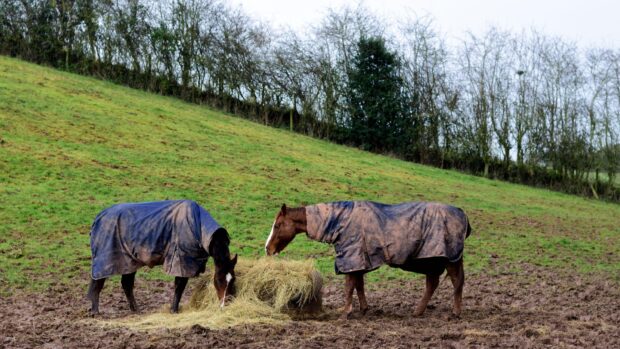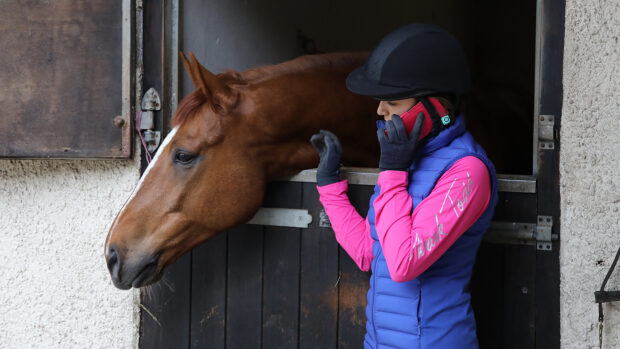When looking for an equine insurer, speak to several reputable firms, preferably those which have been in business for some time and/or with a good track record for settling claims swiftly. Some firms have a wealth of equestrian experience and insure organisations such as the BSJA or BHS.
Another good source of information is your vet. Vets will often recommend companies they think have a good record for dealing with claims.
Read all documentation thoroughly. Read the policy document for small print, as well as the proposal form.
If at any stage you do not understand any part of the cover, keep asking your adviser to explain it, until you are satisfied that you understand the policy.
Check out the level of customer service on offer. Competition is high among insurers to offer add-ons such as advice sheets, newsletters and vet helplines.
Insuring your horse
Always get a thorough five-stage vetting before buying a horse.
The vet may highlight some areas of concern and the insurer may then exclude them from the policy, however, anything not excluded should be covered.
It is not in your interest to insure a horse without a vetting, because this can make settling a claim more difficult. Policies which do not require the horse to be vetted may not be good value in the long-term.
Be realistic about what activities your horse will be doing – insuring your horse for a discipline it doesnOt do will increase the cost of your policy unnecessarily.
Insuring for third party and public liability
This cover is essential for any horseowner as your horse or horses could cause an accident resulting in damage to property or injury to people. Cover is normally inexpensive and could protect you from a large financial claim and legal fees, if you are sued. You may have cover included in membership to an equestrian organisation, but check that you have adequate protection.
Personal accident
You may already have cover, for example, if you are a gold member of the BHS. Check that you have adequate cover and that an additional policy does not cancel out what you are already insured for.
Many policies offer lump sums in the event of loss of limb or organ, such as eye, or death. Some new policies offer a weekly income in the event of temporary total disablement, which can suit freelance instructors.
Understanding your policy
Vet fees
Advances in veterinary science mean that a lot more can be done for a sick or injured horse these days. Again, it is important to get the right amount of vet fee cover. Some policies now offer up to £5,000 of such fees.
Are vet fees limited to the value of the horse and what is the limit on each claim?
Does the policy include treatment by alternative methods, such as acupuncture and chiropracty, or remedial shoeing?
Like car insurance, the excess on a policy should be considered carefully. Many vets say that problems tend to relate to one single accident or illness, rather than a number of small illnesses.
Some policies cover the horse’s transportation to an equine hospital, if that is required. Itis also possible to get cover for the costs of hospitalisation of the horse. These costs can escalate, particularly if you are required to keep paying your full livery costs while the horse is in hospital.
Mortality and theft (Also known as total loss)
This cover pays the full insured cost of the horse in the event of death as a result of accident or injury – if the horse is put down as a result of accident or injury or if it is stolen or disappears. This should not be confused with permanent loss of use.
Check that a mortality claim covers more than just accidental external injury to the horse – this is unlikely to be enough cover.
Permanent loss of use
Permanent loss of use causes some of the most difficult issues between insurer, owner and vet and several insurers believe it is only suitable for valuable competition horses.
Permanent loss of use claims can take a long time to settle, as it has to be shown conclusively that the horse willnever again be able to do the job, such as eventing, for which it was insured. Horses have been known to recover from devastating injuries.
A second veterinary opinion is always needed by the insurance underwriters.
Insurers will often allow the owner to keep the horse as well as paying out the claim. In these instances, the amount paid out will be minus an agreed sum, which the horse is now worth, for example, they will pay the full sum insured less £1,500 – the horse’s new value as a light hack.
Check that the horse does not become the property of the insurer if a claim is made and also find out whether the horse has to be slaughtered to make a claim.
If a loss of use claim is made, the owner shouldkeep in constant contact with the insurer, as there is usually only 12 months to close a claim and you may need an extension while it is established whether or not the horse will recover from the injury/illness.
Horses which have been subjectto a loss of use claim are now all freeze-marked with an “L” in this country – elsewhere, the loss of use freeze-mark is an “R”.
If you are thinking of buying a horse with a loss of use freeze-mark, it may be difficult to get insurance cover other than third party.
Blemishes and scars on show horses and ponies are often excluded from loss of use policies.
Looking for horse insurance? Try Horse & Hound’s insurance comparison service at horseandhound.co.uk/insurance



